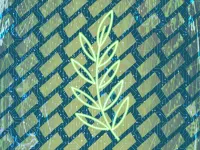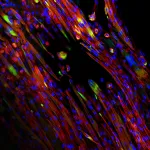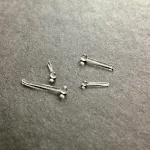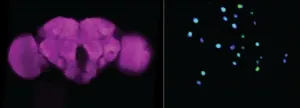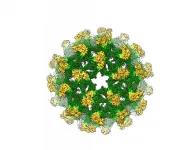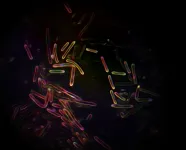Cataloging breast cells to find cancer origins
2021-05-14
(Press-News.org) What if you could predict which cells might become cancerous? Breast tissue changes dramatically throughout a woman's life, so finding markers for sudden changes that can lead to cancer is especially difficult. Cold Spring Harbor Laboratory (CSHL) Associate Professor Camila dos Santos and her team identified and cataloged thousands of normal human and mouse breast cell types. The new catalog redefines healthy breast tissue so that when something goes awry, scientists can pinpoint its origin.
Any breast cell could become cancerous. Dos Santos says:
"To understand breast cancer risk, you have to understand normal breast cells first, so when we think about preventive and even targeting therapies, you would be preventing the right cell types from developing to cancer cells."
A traditional way to catalog cells is by tracking a few signature genes related to the cell's function. To classify cells more extensively, dos Santos' team turned to a technique known as single-cell RNA sequencing. They tracked the activity of several genes in over 15,000 cells in mouse and human breast tissue. Samantha Henry, a Stony Brook University graduate student-in-residence in dos Santos' lab, says:
"We really created a whole catalog of many genes for each cell population to better define them. And when I say there were a lot of genes, there were a lot of genes and it took a long time to get through."
One cell group included estrogen receptor-positive cells, which are generally amenable to treatment. But dos Santos' team found that this group could be split into several subpopulations, where each one might have different responses to therapies.
The team, in collaboration with computational biologist CSHL Professor Adam Siepel and his team, learned that mice and human breast cells had similar genetic profiles, demonstrating why studies in mice are likely to be relevant to humans. Marygrace Trousdell, a computational science developer in the dos Santos lab, says:
"We're always finding ourselves struggling with definitive classifications of certain cell types. Sometimes I think I've seen every gene out there, and then something else will pop up."
Currently, the lab is trying to distinguish normal genetic shifts from those associated with cancer. Dos Santos hopes that her catalog of breast cell types will point to which kinds of cells to monitor and point researchers toward treatment options in the future.
INFORMATION:
[Attachments] See images for this press release:
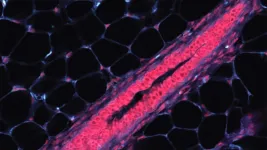
ELSE PRESS RELEASES FROM THIS DATE:
2021-05-14
BIRMINGHAM, Ala. - In a large-animal study, researchers have shown that heart attack recovery is aided by injection of heart muscle cells derived from human induced pluripotent stem cell line, or hiPSCs, that overexpress cyclin D2. This research, published in the journal Circulation, used a pig model of heart attacks, which more closely resembles the human heart in size and physiology, and thus has higher clinical relevance to human disease, compared to studies in mice.
An enduring challenge for bioengineering researchers is the failure of the heart to regenerate muscle tissue after a heart attack has killed part of its muscle wall. That dead tissue can strain the surrounding muscle, leading to a lethal heart enlargement.
Heart experts thus have sought to create new tissue -- applying ...
2021-05-14
Inspired by nature, researchers at Pacific Northwest National Laboratory (PNNL), along with collaborators from Washington State University, created a novel material capable of capturing light energy. This material provides a highly efficient artificial light-harvesting system with potential applications in photovoltaics and bioimaging.
The research provides a foundation for overcoming the difficult challenges involved in the creation of hierarchical functional organic-inorganic hybrid materials. Nature provides beautiful examples of hierarchically structured hybrid materials such as bones and teeth. These materials typically showcase a precise atomic ...
2021-05-14
HOUSTON - (May 14, 2021) - Rice University bioengineers are fabricating and testing tunable electrospun scaffolds completely derived from decellularized skeletal muscle to promote the regeneration of injured skeletal muscle.
Their paper in Science Advances shows how natural extracellular matrix can be made to mimic native skeletal muscle and direct the alignment, growth and differentiation of myotubes, one of the building blocks of skeletal muscle. The bioactive scaffolds are made in the lab via electrospinning, a high-throughput process that can produce single micron-scale fibers.
The research could ease the burden of performing an estimated ...
2021-05-14
Scientists have used fibre-optic sensing to obtain the most detailed measurements of ice properties ever taken on the Greenland Ice Sheet. Their findings will be used to make more accurate models of the future movement of the world's second-largest ice sheet, as the effects of climate change continue to accelerate.
The research team, led by the University of Cambridge, used a new technique in which laser pulses are transmitted in a fibre-optic cable to obtain highly detailed temperature measurements from the surface of the ice sheet all the way to the base, more than 1000 metres below.
In contrast to previous studies, which measured temperature from separate sensors located tens or even hundreds of metres apart, the new approach allows temperature ...
2021-05-14
A microscope used by Antoni van Leeuwenhoek to conduct pioneering research contains a surprisingly ordinary lens, as new research by Rijksmuseum Boerhaave Leiden and TU Delft shows. It is a remarkable finding, because Van Leeuwenhoek (1632-1723) led other scientists to believe that his instruments were exceptional. Consequently, there has been speculation about his method for making lenses for more than three centuries. The results of this study were published in Science Advances on May 14.
Previous research carried out in 2018 already indicated that some of Van Leeuwenhoek's microscopes contained common ground lenses. Researchers have now examined ...
2021-05-14
In research made possible when COVID-19 sidelined other research projects, scientists at Johns Hopkins Medicine meticulously counted brain cells in fruit flies and three species of mosquitos, revealing a number that would surprise many people outside the science world.
The insects' tiny brains, on average, have about 200,000 neurons and other cells, they say. By comparison, a human brain has 86 billion neurons, and a rodent brain contains about 12 billion. The figure probably represents a "floor" for the number needed to perform the bugs' complex behaviors.
"Even though these brains are simple [in contrast to mammalian brains], they can do a lot of processing, even more than a supercomputer," says Christopher Potter, Ph.D., associate professor of neuroscience ...
2021-05-14
Being treated fairly is important - but fairness alone isn't enough to make people feel valued in a workplace or other groups, new research suggests.
Researchers found that "distinctive treatment" - where a person's talents and qualities are recognised - provides this sense of value while also reinforcing their sense of inclusion. It also promotes mental health.
The findings suggest there is no conflict between "fitting in" and "standing out" in groups - in fact, they complement each other.
But while the importance of fairness is widely accepted, the researchers say distinctive treatment is ...
2021-05-14
AMES, Iowa - The field photos show the hard, rough country that some glaciers slide over: rocky domes and bumps in granite, rocky steps and depressions in limestone. The glacier beds dwarf the researchers and their instruments. (As do the high mountains pictured on the various horizons.)
During their trips to glacier beds recently exposed by retreating glaciers in the Swiss Alps (Rhone, Schwarzburg and Tsanfleuron glaciers) and the Canadian Rockies (Castleguard Glacier), four glaciologists used laser and drone technology to precisely measure the rocky beds and record their very different contours.
The researchers turned the measurements into high-resolution digital models of those glacier beds. Then they went to work with manageable but representative subunits of the ...
2021-05-14
Better designed vaccines for insect-spread viruses like dengue and Zika are likely after researchers discovered models of immature flavivirus particles were originally misinterpreted.
Researchers from The University of Queensland and Monash University have now determined the first complete 3D molecular structure of the immature flavivirus, revealing an unexpected organisation.
UQ researcher Associate Professor Daniel Watterson said the team was studying the insect-specific Binjari virus when they made the discovery.
"We were using Australia's safe-to-handle Binjari virus, which we combine with more dangerous viral genes to make safer and more effective vaccines," Dr Watterson ...
2021-05-14
ITHACA, NY, May 13, 2021 -- Cyanobacteria are one of the unsung heroes of life on Earth. They first evolved to perform photosynthesis about 2.4 billion years ago, pumping tons of oxygen into the atmosphere - a period known as the Great Oxygenation Event - which enabled the evolution of multicellular life forms.
Led by BTI faculty member END ...
LAST 30 PRESS RELEASES:
[Press-News.org] Cataloging breast cells to find cancer origins


